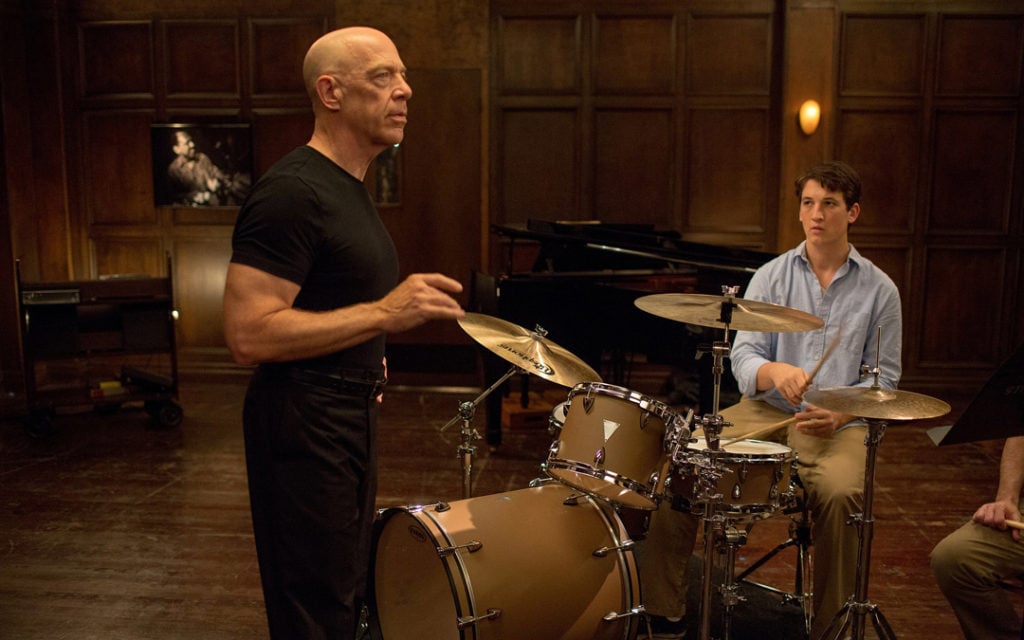Write a Role a Movie Star Wants to Play
January 6, 2017
This might sound obvious enough, but many novice writers make the mistake of writing a spec script that’s not easily attachable. They write a script that doesn’t have a clear-cut lead or the lead character isn’t appealing to an actor. Although not impossible, it’s less likely that you’ll sell your screenplay if you don’t have a movie star attached.
From my own experience, I’ve written many scripts, but the two that sold both had a movie star attached.
After selling our first comedic screenplay (Pierre Pierre), my co-writer and I were eager to write another one. Pierre Pierre was a huge sale and, in addition to a movie star, we had an A-list director attached. This was partially due to a larger-than-life lead character. So we had to come up with an equally larger-than-life character to rival Pierre Pierre. After bouncing around a few ideas, we created a Scottish cop character named “Charlie O’Gunn”. We made many notes outlining O’Gunn: his backstory, his mannerisms, his idiosyncrasies, and even some lines of dialogue. O’Gunn was what you wanted from “The Pierre Guys”. He was our next big character!
And then on a sudden whim, we wrote a horror spoof titled Werewolves Are Losers.
Not a good idea, but a definite learning experience.
We were both young and very green, and thought that anything we wrote would be embraced with open arms. Werewolves Are Losers was a funny script. No problems there. It was also absurd as heck, chaotic and over-brimming with supporting characters.
In short, it was a hard sell.
The protagonist, Moran Lambertville, is a dim-witted werewolf hunter with vaguely Eastern-European origins. He’s got a big sword, and has a few good one-liners, but he’s not half as memorable as his pet bat, Byron, or his taxi-driver sidekick, Sammy, or Charlie O’Gunn (who we included in the script as a werewolf-hating police detective). Moran Lambertville doesn’t jump off the page like the supporting characters. And he’s the lead character. He’s the one you need to fetch a movie star with. Moran didn’t have the focus or the personality for such a task. Essentially, he was the straight guy in a universe of lunacy … it needed to be the other way around.
Our agent slipped Werewolves Are Losers to a studio exec, and the response was less than enthusiastic. The exec couldn’t express why he thought it was inferior to Pierre Pierre, but he suggested not going out with it. In his words, we could “lose all the good will we have gained from Pierre Pierre.” It was good advice, and our agent didn’t go out with the script. Instead we started to examine the differences between this script and the last one. In doing so, we zeroed in on Charlie O’Gunn.
We shouldn’t have been sidetracked by werewolves and all these other characters. We should have just written an O’Gunn script. He was the big character. He was the one.
We pitched the idea to our agent and he loved it. There was a little debate on whether it should be a buddy comedy titled O’Gunn & Bullet (O’Gunn’s straight-laced partner is named “Bullett Martinez”), but we decided we had to do what we did with Pierre Pierre. We needed to make it clear that this was a movie star vehicle. A sole movie star vehicle. And placing focus on O’Gunn would do just that.
So we wrote O’Gunn.
A first draft of the script was done in a couple months. We were in the zone and it showed. The script was wild and alive. It was the Pierre Pierre of cop comedies.
We got the necessary movie star attachment.
And we sold it for six figures.
In addition to being funny, the characters of Pierre and O’Gunn are both subversive and have a dark side. This was another factor that made them actor-friendly. They also dominated their respective scripts with a lot of screen time and a lot of dialogue.
Generally speaking, stories with an ensemble cast of characters are the domain of auteurs (writer-directors) or established franchises (Star Wars, The Avengers, Fast & Furious, etc.). If you’re a Hollywood outsider and hoping to break in, your chances are greater if you focus on a story that centers on just one or two characters.
Think of most films, small and large: Don’t they usually have a clear lead? How many characters are focused on the poster, advertising, etc.? With the exception of the aforementioned franchises, it’s usually a property that got the green light because of a certain actor attachment. It’s either a well-established movie star or an actor with heat (e.g., Ryan Gosling or Emma Stone). So take notice of the type of movies that are getting made, the actors that are starring in them, and imagine where your screenplay fits into the picture.
Does this mean write a spec with a Ryan Gosling or an Emma Stone-type character?
Not necessarily.
Actors usually don’t get too excited about playing a familiar role (when they do so, it’s usually “the paycheck movie”). Actors, like most creative people, want to stretch their talent, show people their range, and maybe even get an Oscar® or Golden Globe® as a result. Charlize Theron wouldn’t be the first actress you’d envision as serial killer Aileen Wuornos in 2003’s Monster. After changing her appearance and rising to the challenge, however, Theron was lauded with awards and was suddenly up for all kinds of roles. Actors don’t want to be typecast, so don’t typecast them in your script. In other words, don’t write a role Ryan Gosling has played, but one you’d imagine he’d want to play. Is the character dynamic? Is he or she provocative? The more complex and compelling the character, the more likely it’ll connect with an actor. They’re not getting an Oscar for playing an affable but bland person who doesn’t have any problems. They’ll get one for playing a character with either physical or emotional obstacles to overcome. Think struggle. Think conflict.
If the character has both physical and existential strife, even better. Take the protagonist in 2008’s The Wrestler: Randy “The Ram” Robinson. Somewhere between Rocky Balboa and Jake LaMotta, Randy is a likable underdog but has his share of character flaws. He’s a deadbeat dad with a lot of baggage. In one scene, he’s a people person, charming and laughing over a beer. In another scene, he’s exploding with sociopathic rage, storming through a supermarket like the Frankenstein Monster. Mickey Rourke had a lot to work with. Not only did the role require a physical transformation, it enabled Rourke to show the full range of his emotions and talent. Randy also dominates the narrative; he’s in every scene. He’s the title character. Note that many film titles, from Rocky to The Wrestler, place focus on the lead character. The script shouldn’t be any different than the title in this respect. You should be thinking about who you’re writing about, not just what you’re writing about.
So the next time you’ve got a script with five or six main characters, take a step back and ask yourself the following questions: Who’s the character that will appeal most to an actor? Who’s the character you can envision a movie star playing? Which character jumps off the page?
Once you’ve zeroed in on that character, build the script around him or her.
It’s their story, you’re just writing it.
Written by: Edwin Cannistraci
Edwin Cannistraci is a professional screenwriter. His comedy specs PIERRE PIERRE and O’GUNN both sold with more than one A-list actor and director attached. In addition, he’s successfully pitched feature scripts, TV pilots and has landed various assignment jobs for Universal, Warner Bros, Paramount and Disney.



